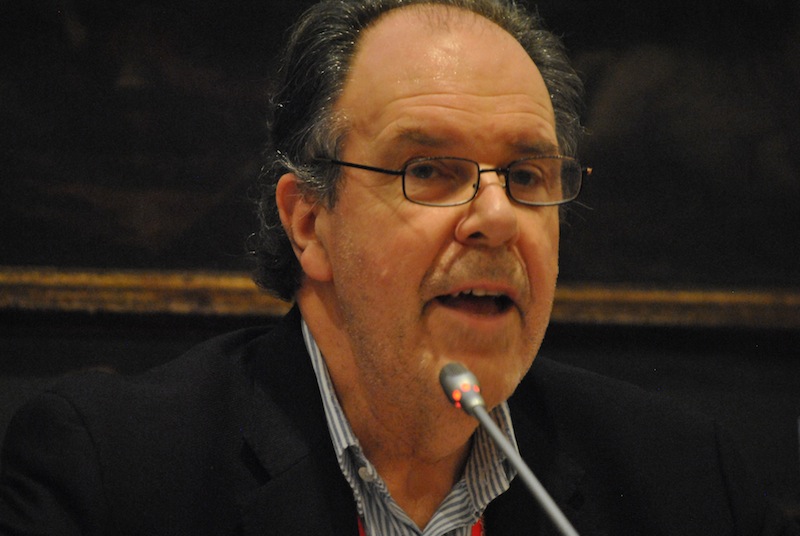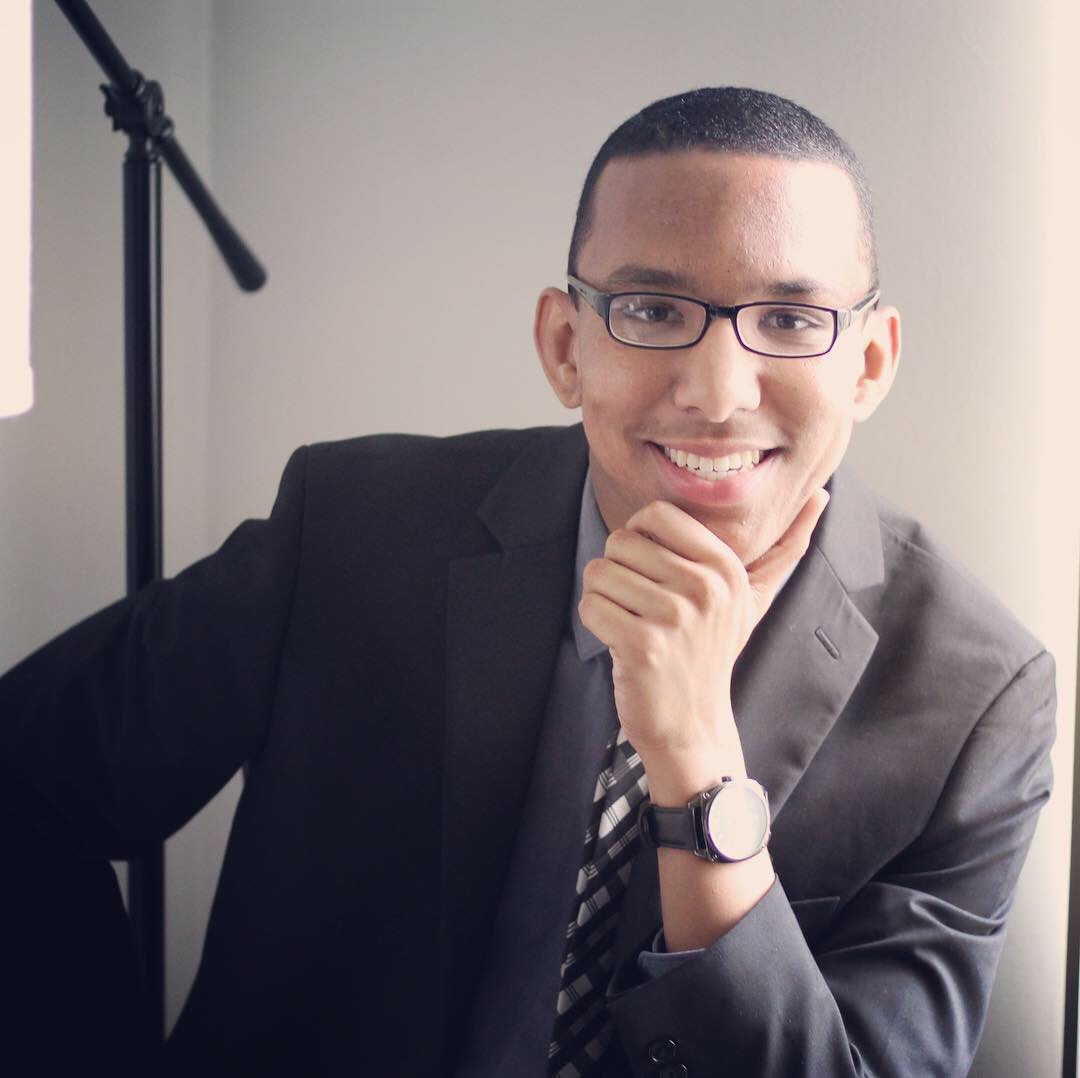Summer 2020. A time of a passion, tension, uncertainty, and social change.
It is this very backdrop that Ralph Cochran, Capital’s new director of Diversity and Inclusion, finds himself in as he embarks on a new career journey.
On Aug. 3, Cochran took on the director of Diversity and Inclusion position. This was a position that had been left absent for the entire 2019-2020 school year, and it seems that the arrival of a new director could not have of come at a better time. With rising political and social tension of the 2020 presidential election, this is bound to be a tempestuous semester. The ODI (Office of Diversity and Inclusion) will need someone to lead and advise minority students during these times.
With the state that things are in now, it’s clear that America has a job to do; a job that involves picking up the shattered pieces of a society that’s riddled with civil unrest. The key to bridging the social divides among American citizens, is to go back to where everything begins, our educational institutions. Now more than ever, it’s important that schools across the country teach students about the power of diversity and the knowledge that comes with it.
Cochran believes that diversity should be the cornerstone of any educational institution.
“How can an institution claim to be rooted in education, and rest in only knowing the history and ways of singular identities?” Cochran said.

Photo submitted by Ralph Cochran.
Cochran’s role as director focuses heavily on advising and supporting minority students and the organizations that they run. Examples of such organizations include SOLA (Students of Latinx Affinity), EBA (Ebony Brotherhood Association), and GSA (Global Student Association). These organizations aim to educate the campus community on a wide variety of cultures while also creating a home for minority students to thrive in.
Being a 2011 Capital alumni, Cochran is familiar with the campus landscape. During his time at Capital, Cochran was a regular at the Multicultural Affairs Office, which was located in the Kerns Religious Center. In the late 2000s, Capital’s diversity program wasn’t as developed as it is now, but the foundations were there.
“Before the remodeling of the SA residence hall, there was no cafe, just a couch in the lobby where students from underrepresented backgrounds would hang out in-between classes,” Cochran said. “You could walk in there almost any time of day and find a group of students there laughing and enjoying life.’
Cochran explained that having a diverse campus is only half the battle. Universities must also invest in resources that allow minorities to feel comfortable and welcomed among their peers. It is only then that campus life can thrive with a rich student body.
“Having people with different identities on a campus does nothing for the individual or the institution if those people have a bad experience,” Cochran said. “It’s the inclusionary efforts that aid in creating a positive impact. D&I offices and spaces for the students who identify with those offices help with the inclusionary components.”
This is where the concept of safe spaces comes up, a rather controversial topic among universities across the country. Some people say that these spaces are necessary for the mental health and safety of the minority students, while others argue that it causes more division.
Both sides often fail to see that the crux of the problem lies in the semantics of the term rather than the actual concept.
Critics of these spaces believe that it’s not preparing students for the harsh reality of the world. A reality where people don’t care very much about the feelings of strangers, and that’s a totally fair argument for those critics to have.
One such critic is Reuters journalist, John Lloyd, who wrote an article warning about the dangers that could arise from developing safe spaces.
“The downside of the safe space initiative is its weaponization, its use to exclude so that criticism, opposing opinions and alternative analyses are not confronted and argued over, but prohibited,” Lloyd said.

Photo taken by Mario Panico. Courtesy of Wikipedia.
The thing is, there is some truth to what Lloyd is saying here, but not for the reason he intends; there is a downside, yes, but it’s the overreliance of the word “safe.” No matter where you go on a college campus, there isn’t an “absolutely safe” space for people to coexist with others. Even at ODI events, people can expect to encounter discourse among the minority students as they voice their opinions on social issues.
This is something that Cochran is aware of, and he stresses that it’s important to be conscious of the words that people use to describe a space.
“The difficulty [in describing a space] is that they can never actually guarantee safety,” Cochran explained. “Even people with similar identities can have different opinions on things that can be emotionally harmful to one another. I will say, it is extremely important for students to have intentional spaces.”
For Cochran, intentional spaces is a better term to use because it identifies that a space is intending to cater to certain students’ needs, but it also acknowledges that it could never fully protect someone from a potentially harmful opinion that a fellow student may share.
Semantics aside, the bottom line is that these types of spaces should aim to be a key factor in helping to reassure students that they are welcomed on campus. This is done by giving them a chance to network with those similar to them; the underrepresented.
Even though these spaces are often used by minorities seeking comradery with those just like them, it’s also a great location for students to expose themselves to new cultures and communities that they’ve never experienced before.
Traditionally, diversity and inclusion organizations would host tabling events, discussion nights, and even parties that highlight the characteristics of their respective cultures. Even though the first part of the semester will be virtual, Cochran is hopeful that the spirit of these events will be carried forward online. For instance, this year’s Smooth Transitions program features guest speakers, presentations, games, and even physical activities that ST mentees can partake in at home.
It’s a fair assertion that some students may feel that they are not welcomed at events that are hosted by minority groups. For those that don’t come from underrepresented backgrounds, these events may seem like a “members-only” affair, but that couldn’t be farther from the truth. In addition, there are people who just feel nervous about stepping out of their comfort zones. Cochran explored these notions.
“I would amplify that D&I events are for everyone,” Cochran said. “That feeling of discomfort or not belonging is often almost a constant for underrepresented students at PWI’s, but overcoming it is how we learn and build relationship across difference.”
One of the greatest weaknesses of this country is our inability to realize the power that comes from diversity. Instead of living up to the ideals of this country, a place where everyone should be able to prosper equally, America is currently locked in a disappointing status quo because people are failing to learn about the experiences of others. By experiencing and understanding diverse cultures now, students will have broadened mindsets when they finally go out into the open world. Those are the minds that the country desperately needs right now.
For related reading, please check out this other Chimes article written by fellow reporter, Shirleeah Pasco.


